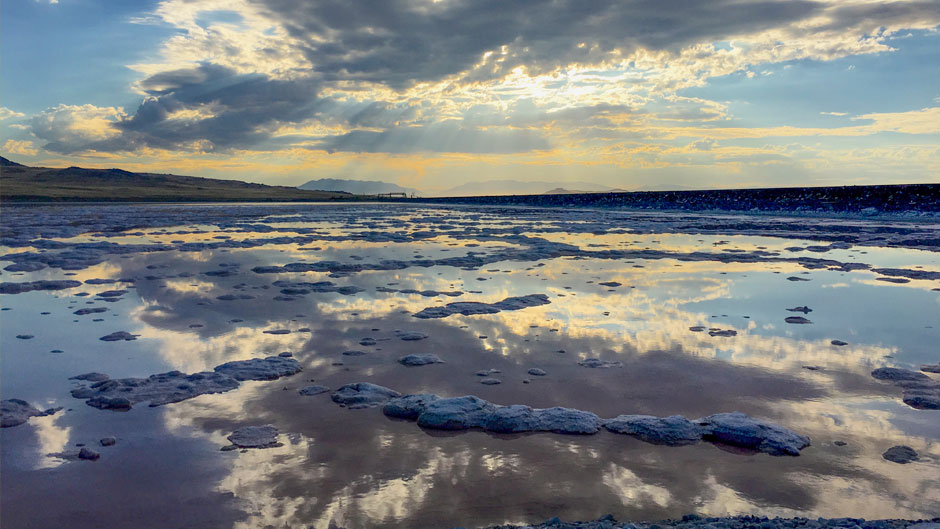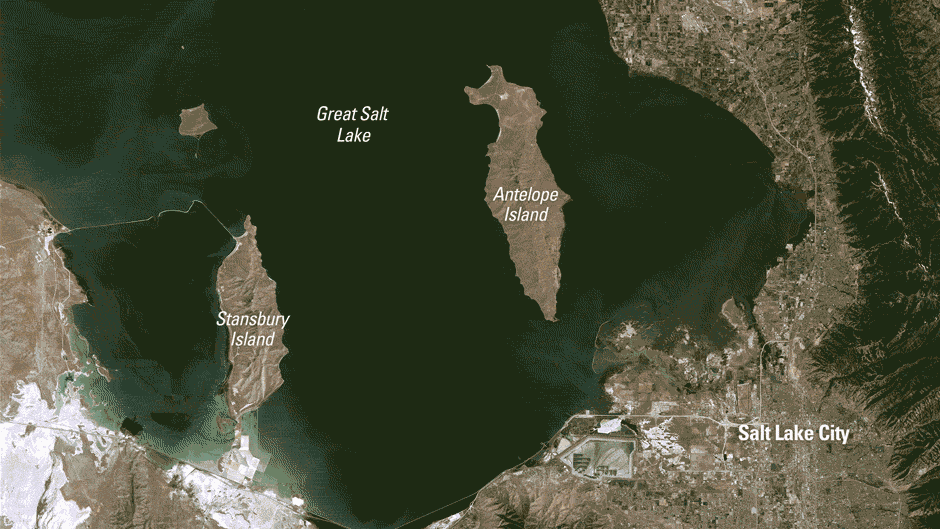The dust seemed to come out of nowhere, reducing visibility in parts of Salt Lake City to near zero. As it thickened, Cassandra Gaston, an atmospheric chemist from the University of Miami, could hardly see 10 feet in front of her.
But having a crystal clear view of the outside world wasn’t her greatest concern. She was more troubled about how the dust would affect residents’ breathing.
It was mid-April of 2022, and Gaston had traveled to Utah’s largest city to work with a team of other researchers to determine whether dust emissions from the Great Salt Lake—which has been drying up at an alarming rate because of negligent irrigation practices, mining, and climate change—are the primary source of Salt Lake City’s poor wintertime air quality.
“The air quality in Salt Lake City is actually worse than the summertime air quality you’d experience in Los Angeles,” said Gaston, a professor at the University of Miami Rosenstiel School of Marine, Atmospheric, and Earth Science. “We always think of L.A. as the city with the biggest smog problems, but Salt Lake City is much worse now, even though it doesn’t have the same level of industry as Los Angeles. And the question has always been, why? Is there a relationship between the way that water levels in the Great Salt Lake have been managed or mismanaged and the downstream impacts on air quality for residents living in Salt Lake City? That’s what we’re hoping to find out.”
So far, lab analysis of samples collected from sections of the exposed lakebed indicate that there is a connection. Those samples were provided by University of Utah scientist Kevin Perry, who is conducting his own investigation into the arsenic that is contained in those dust particles.
“From our laboratory experiments, we’re fairly confident that those emissions can exacerbate both particulate as well as ozone pollution,” Gaston said.
But the real litmus test will come in April 2024, when Gaston and her team will test samples in the field, outside the controlled confines of an indoor laboratory. They will deploy to Utah for a month, testing gas and particle samples using two mass spectrometers positioned near the Great Salt Lake. “We’ll simulate the process of allowing dust from the lake to interact with different pollutant gases,” Gaston explained.
She is collaborating on the project with Kerri Pratt, an associate professor of chemistry at the University of Michigan.

The Great Salt Lake had not always experienced the persistent drought conditions it is undergoing. During summer months, the lake’s level would typically drop, but as spring arrived and snowpack melted, rivers would restore it. Now, as Salt Lake City’s population has exploded, more water from those rivers has been diverted before it reaches the lake. Climate change-induced drought is also playing a role in the lake’s declining water level, some scientists say.
What is clear is that as the Great Salt Lake continues to recede, the exposed lakebed turns into toxic dust, potentially endangering the health of residents when strong winds carry the dust for miles.
“Breathing in large quantities of small particles can be detrimental to lung function, and some of these small particles can make it into the bloodstream and have cardiovascular implications as well,” Gaston pointed out.
The issue has become a political firestorm for Utah residents who don’t want their largest city to endure what happened to a once-thriving tourist town near California’s Owens Lake in the early 1900s. Back then, officials diverted water from the river and streams that fed Owens Lake to Los Angeles, which was experiencing a population boom. Owens Lake eventually dried up, turning the lakeside resort of Keeler into a ghost town and, worst, creating a severe dust pollution problem.
“So, while our research is a very chemistry-heavy project, it’s also very applicable to some of the big questions that not just scientists have but also the public,” Gaston said. “Why are we having these major air quality problems not just in Salt Lake City but in some of the more rural parts of the Western United States? Are our water-use practices leading to unintended air quality problems? So far, what our results are showing is there’s a definite chance this is the case.”
James Christie, a Ph.D. student in Gaston’s lab, who is a key team member on the project, said that he hopes the research will lead to tangible solutions to help control dust outbreaks in Salt Lake City. “We’re at a point,” he noted, “where we’re accumulating this information, and it needs to get out there for policymakers to make informed decisions.”

